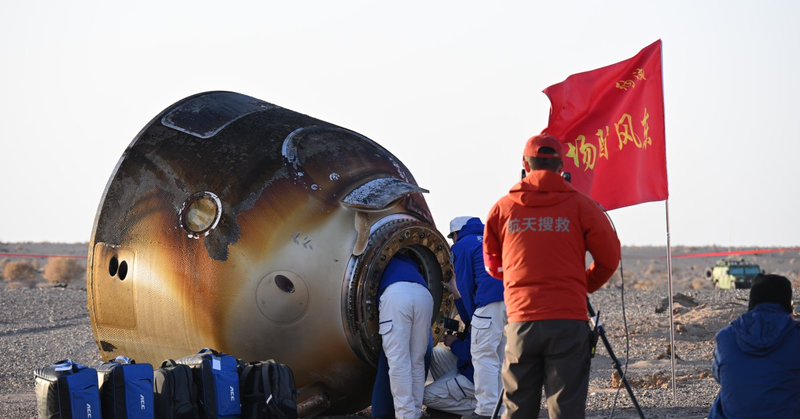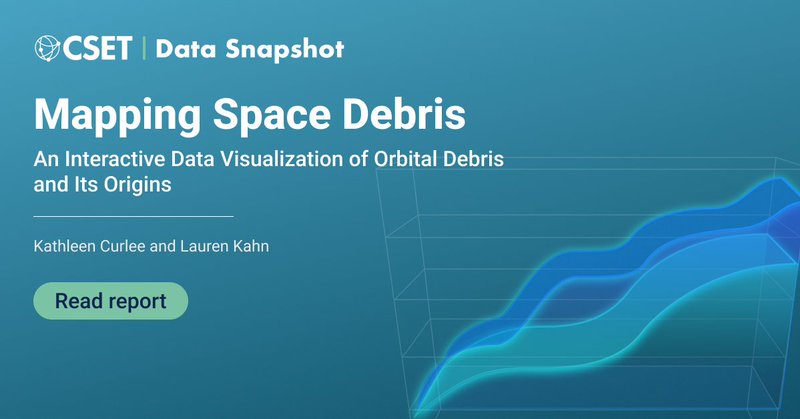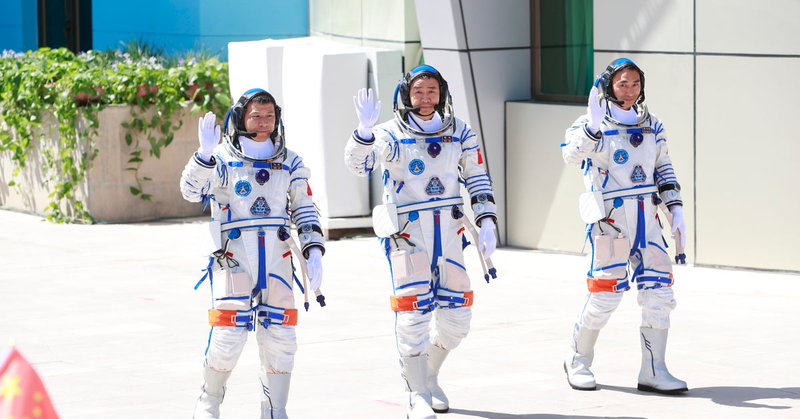
Kathleen
@KathleenCurlee
Followers
214
Following
17K
Media
252
Statuses
1K
Space + national security and emerging tech. Research Analyst @csetgeorgetown UPenn 2021.
Washington, D.C.
Joined January 2010
The U.S. AI Action Plan promised more than tech leadership—it promised an AI-ready workforce. Two executive orders set deadlines for action on AI education and apprenticeships. Those deadlines have passed. In a new CSET blog, @ali_craw outlines what progress has been made and
cset.georgetown.edu
The U.S. AI Action Plan is built on three familiar pillars—accelerating innovation, expanding infrastructure, and maintaining technological leadership—but its real test depends on education and...
0
3
4
Many companies & people are regularly using Gunter's Space Page. Although access is free please remember that it needs a lot of my time & work to make it available. So if my website is useful for you, please consider supporting me with a donation! https://t.co/IDEDWMGuAE
3
15
67
What to know about space debris https://t.co/A9X4CUybKS
time.com
A fleck of junk moving faster than a bullet took a spacecraft out of service.
8
18
34
Highly recommend checking out this new piece on ASATs and space debris (complete w/ cool data!) from @KathleenCurlee & @Lauren_A_Kahn from @CSETGeorgetown!
In 2022, China obliquely lampooned the US for its contributions to space debris, telling the UN that “a certain superpower" has conducted more Anti-Satellite (ASAT) weapons tests than any other country and "created more space debris than any other nation.” That claim wasn’t true
1
2
8
One of my favorite charts that @Lauren_A_Kahn created with @SpaceTrackOrg data. We identified ASAT tests and looked to see what their legacy debris was. Fengyun-1C created an enduring issue for orbital regimes, yet China claims the U.S. is most responsible for careless ASAT
In 2022, China obliquely lampooned the US for its contributions to space debris, telling the UN that “a certain superpower" has conducted more Anti-Satellite (ASAT) weapons tests than any other country and "created more space debris than any other nation.” That claim wasn’t true
0
0
2
In 2022, China obliquely lampooned the US for its contributions to space debris, telling the UN that “a certain superpower" has conducted more Anti-Satellite (ASAT) weapons tests than any other country and "created more space debris than any other nation.” That claim wasn’t true
5
13
31
Excited to share my and @Lauren_A_Kahn new piece in The National Interest on anti-satellite weapons and space debris. This is particularly timely given the delay of the #Shenzhou20 crew return as a result of a suspected orbital debris strike. https://t.co/M0Uhd3RrMb
2
5
11
On just its second launch of a New Glenn rocket, Blue Origin successfully landed its first stage booster, named 'Never Tell Me the Odds', becoming the second company to land an orbital class rocket. Watch live: https://t.co/pDMKUW94nY
4
52
349
The #Shenzhou-20 Crew is still stuck in space after debris struck their return craft. I suspect incidents like this will only persist as #LEO proliferates. @Lauren_A_Kahn and I have just created a data interactive exploring trackable #space #debris, who owns it, and how it
cset.georgetown.edu
Data Snapshots are informative descriptions and quick analyses that dig into CSET’s unique data resources. This data interactive maps each of the over 34,000 pieces of space debris the United States...
0
5
9
CSET's @Lauren_A_Kahn shares insights with @sciam on the growing risks from orbital debris.
🚨Three Chinese astronauts couldn’t return to Earth after space junk hit their spacecraft. Scientists warn this could be just the first of more accidents caused by orbital debris. There's concern. “There are a lot of people up there,” one source told me. https://t.co/QwlJM48U7V
0
2
4
🚨Three Chinese astronauts couldn’t return to Earth after space junk hit their spacecraft. Scientists warn this could be just the first of more accidents caused by orbital debris. There's concern. “There are a lot of people up there,” one source told me. https://t.co/QwlJM48U7V
scientificamerican.com
Three Chinese astronauts will likely return safely to Earth after a reported space-junk strike. But the incident highlights the growing risk of orbital debris
1
6
8
Explore the interactive here: https://t.co/UcWlPs1jab
#SpaceDebris #SpaceSecurity #CSET #SpacePolicy #ASAT #OrbitalDebris
cset.georgetown.edu
Data Snapshots are informative descriptions and quick analyses that dig into CSET’s unique data resources. This data interactive maps each of the over 34,000 pieces of space debris the United States...
0
0
2
Understanding where debris comes from, and how it behaves, is essential for any conversation about sustainability and safety in orbit. CSET’s new interactive offers a data-driven way to explore that history:
1
0
2
These fragments don’t just vanish. They persist for decades, intersecting the same orbital regions used for crewed missions, commercial constellations, and global communications.
1
0
2
The 2007 destruction of China’s Fengyun-1C satellite remains one of the most consequential. That single ASAT test produced over 3,400 fragments, or about 19% of all tracked debris, much of it still orbiting in LEO today
1
0
2
Just 20 fragmented satellites and rocket bodies make up nearly three-quarters of all tracked debris still in orbit. @Lauren_A_Kahn and I worked together to explore the origins of debris.
1
0
2
The reported debris strike impact on Shenzhou-20 is a reminder: even tiny fragments in space can be catastrophic. A 10cm object at orbital speed has the energy of several kg of TNT — like a 550lb object hitting you at highway speed on Earth. NASA calls orbital debris the single
cset.georgetown.edu
Data Snapshots are informative descriptions and quick analyses that dig into CSET’s unique data resources. This data interactive maps each of the over 34,000 pieces of space debris the United States...
Safety First: Shenzhou-20 Return postponed: The China Manned Space Agency has confirmed that the Shenzhou-20 spaceship may have been hit by a small orbital debris object. Officials are conducting impact assessments and risk analyses to evaluate the situation. Updates will follow.
0
2
6
@CSETGeorgetown ’s new data snapshot visualizes where that debris comes from and where it ends up. Using data from @SpaceTrackOrg, we map the distribution of debris across LEO, MEO, GEO, and HEO, revealing how a few catastrophic events by a handful of countries created most of
1
0
2














